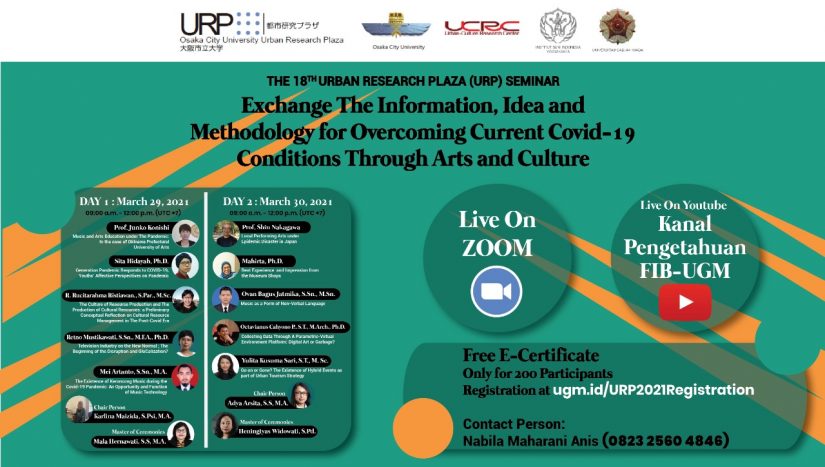
On 11 March 2020, the World Health Organization (WHO) declared a global pandemic: COVID-19. One of the main emergency measures taken by local Asian governments was the temporary suspension of all educational institutions, public services, and social, cultural, leisure-recreational activities, followed by the closing of non-essential businesses, including cultural institutions and industries. In contrast to this situation, the demand for cultural and creative content has gradually increased throughout the lockdown period, with digital access including the use of social media having become more critical than ever before. Ironically, despite the crucial role played by culture in times of isolation and resiliency, economic indicators predict that the cultural sector will be one of the most affected by, and probably one of the latest to recover from the pandemic and its consequences (UNESCO 2020).
The systemic uncertainty created by the crisis has indeed generated serious problem for the very human need to connect with arts and culture. It prevents us from visiting museum and heritage places to attending theatre performances and community cultural practices. UNESCO records that more than 95% were closed in May 2020, and 13% of them may not be reopen (UNESCO, 2020). The past few months has been witnessed that more than 75 million jobs in the travel and tourism sector are under threat. Cultural tourism makes up nearly 40% of world tourism revenue (UN NEWS). It is important to note that the cultural and cultural industries contribute to US $2,250 BN to the global economy and account for 29,5 million jobs worldwide. To overcome the crisis, some Asian countries have taken policies such as in China where the government funded
US $ 56 million for cultural and tourism business, and in Indonesia, the Directorate-General for Culture’s has launched a YouTube channel “BudayaSaya” to share artistic performances and artisans’ masterclasses on dancing, painting, music, storytelling, and producing films.
While the arts and cultural sectors are among the hardest hit by the global pandemic, it is believed that arts and culture play a pivotal position to controland minimize the impact of the pandemic. Karavaïeff (2020) reports how arts and culture might help people during the lockdown and confinement. Social distancing and isolation have created an ether of personal spaces, but it is in these spaces that we listen to that great music, watch movies, cultural performances, and obtain joy from the artworks that we see with our devices.
Museums have also gone through a process of digitalization of their collection and presented online to reach wider global audience during the pandemic. Against this background, the two day seminar addresses several issues on exchanging information, ideas, and methodology in the sector of arts and culture to overcome the current COVID-19 pandemic.

